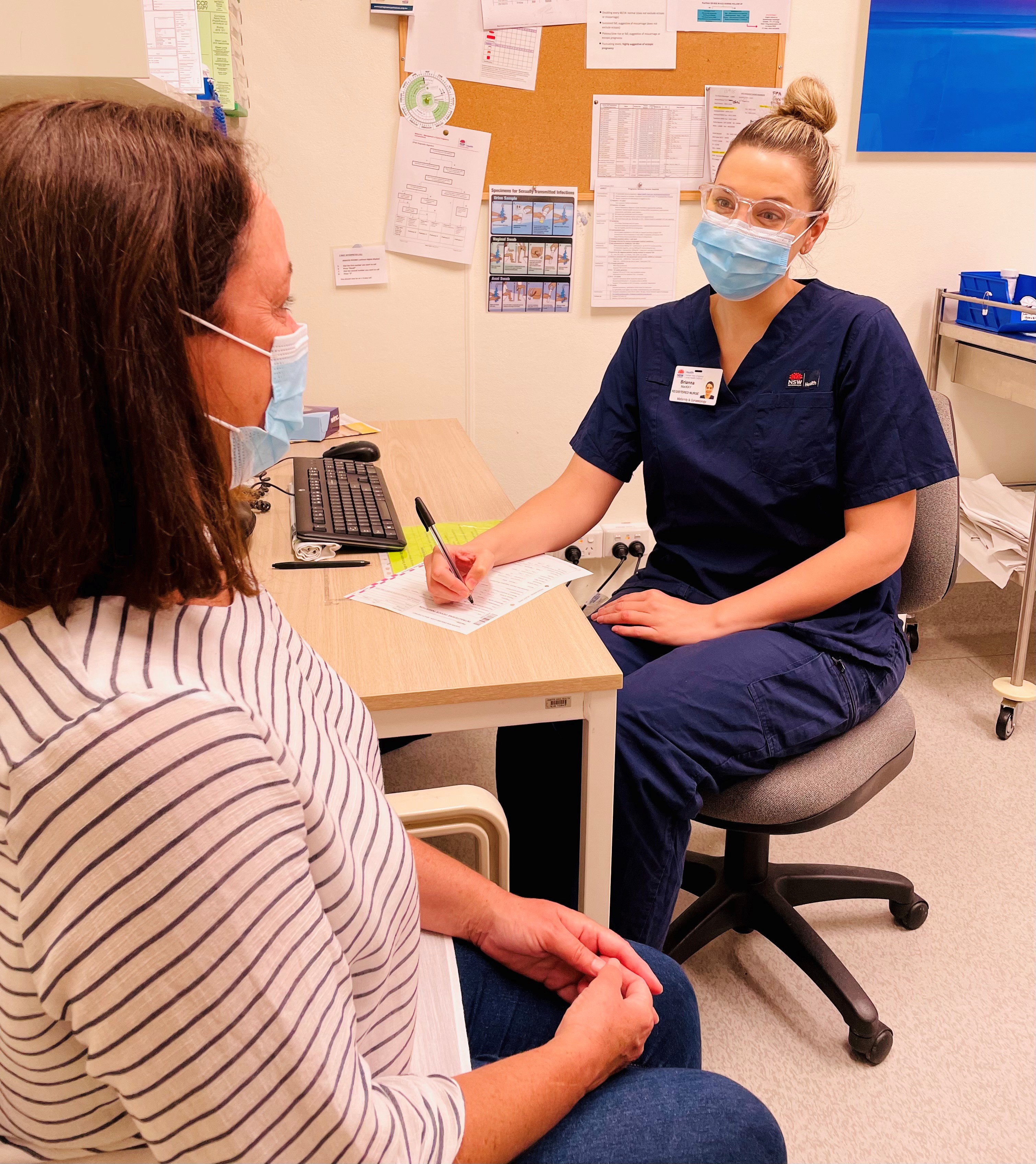
Gynaecological Cancers
Welcome to the John Hunter Hospital Gynaecological Cancer Service.
The Hunter New England Centre for Gynaecological Cancer is a specialist service providing coordinated and individualised care for women undergoing investigations and treatment for gynaecological cancers. This includes cancer of the ovary, uterus, cervix and vulva.
Our team consists of three gynaecological oncologists specialised in the complex surgical management of gynaecological cancers. They are supported by a clinical fellow who is a doctor who has completed their training in gynaecology and is undertaking further specialised training, and a registrar who is a doctor gaining further surgical experience.
The Clinical Nurse Consultant for the service and acts as a resource for women and their families whilst coordinating their care and follow up treatment. There is also a Cancer Care Coordinator who provides additional support and information to patients whilst coordinating the weekly multidisciplinary meeting where imaging and pathology reviews are undertaken to determine ongoing management.
A clinical psychologist is available to support women whilst an inpatient on ward K3 and as an outpatient providing face to face and telephone consultations. The unit is involved in research projects at a local, national and international level with the aim of improving outcomes for all women diagnosed with a gynaecological cancer.
Anne Mellon
Clinical Nurse Consultant

Gynaeoncology Clinic
Gynaeoncology hold a weekly clinic in the Maternity and Gynaecology outpatient’s clinic at John Hunter Hospital. This is located near the main entrance of John Hunter Hospital on Level 2. It can be found by turning left at the Information Desk and then proceeding down the corridor past the Pharmacy. This clinic is staffed by Gynaecological Oncology surgeons, clinical fellow, registrar, nurse and clinical psychologist. Both new patients and follow up patients are seen in this clinic.
Pharmacy. This clinic is staffed by Gynaecological Oncology surgeons, clinical fellow, registrar, nurse and clinical psychologist. Both new patients and follow up patients are seen in this clinic.
The Gynaeoncology clinic is held once a week on a Thursday afternoon. Appointments are scheduled for 45 minutes for new patients and 15 minutes for follow up appointments. Appointments with the clinical psychologist are scheduled for 1 hour. Due to some women having complex issues, some appointments may run over time. Please be assured that every woman who presents to our service will be provided the time they need in their consultation.
During your clinic appointment the doctor or nurse will discuss your medical history with you, as well as undertake a physical examination. This will involve a pelvic, vaginal and speculum examination. Depending on the reason for your appointment we may also need to take a biopsy or perform an examination using a colposcope. A colposcope is a microscope that magnifies the view of the cervix, vagina or vulva and remains outside your body during the examination. A nurse may chaperone while the doctor is undertaking your examination.
If you would prefer to see a female doctor then please make our administration assistant aware when booking your appointment. We will do everything we can to accommodate your needs.
Gynaeoncology Admission and Surgery
If you require surgery and need to stay in hospital, the procedure and process of admission will be discussed with you at your appointment. If you would like more detailed information please see the below link;

Cancer of the Ovary
Cancer of the Ovary Surgery
Surgery is undertaken for removal of a pelvic mass, often suspicious for ovarian cancer. The treatment for ovarian cancer involves an operation to remove as much of the cancer as possible. This surgery is called cytoreductive surgery or a radical debulking.
As we don’t know exactly where your cancer has spread it is impossible to know precisely what surgical procedures will be needed. We do know that the cancer often spreads to tissues such as the surface of the bowel, the surface of the diaphragm, and the omentum (fatty sheet of tissue which hangs off the stomach).
Your surgery may involve:
- removal of the uterus, tubes and ovaries
- removal of the omentum
- removal of the part of the bowel if cancer is found
- removal of any cancer we find in other organs (liver, spleen, bladder and stomach) or the peritoneal lining.
If bowel surgery is likely you may also need to see the stomal therapy nurse to discuss and be sited for a colostomy (stoma bag).
Surgery alone can rarely remove all the cancer cells, so you may need chemotherapy to get rid of any cancer that may be left after the operation. Chemotherapy will usually be scheduled for 4 to 6 weeks after surgery.
Results of treatment
With surgery and chemotherapy, between 30% and 40% of women with this cancer are cured. For other women, the cancer will eventually recur. If it recurs, you cannot be cured. Most women (between 60% and 80%) will live for two or more years. They will be perfectly well, have no symptoms and have an excellent quality of life.
There is no way of knowing your outcome until after the operation and all the associated pathology tests have been conducted.
Cancer of the Cervix
Cancer of the Cervix Surgery
The operation you will be having is called a radical hysterectomy and pelvic lymphadenectomy. It will usually involve removal of the uterus and fallopian tubes, cervix, upper 2cm of the vagina, as well as tissue on each side of the cervix and lymph nodes in the pelvis.
The goal of your operation is to remove all the cancer, as well as a margin of normal tissue and those tissues (like the lymph nodes) where this type of cancer often spreads.
The ovaries are occasionally involved with this kind of cancer, depending on the subtype of cancer and so it might be decided to remove the ovaries also. This will be decided individually. In women who are past menopause, we recommend their removal to avoid later problems (such as ovarian cysts and ovarian cancer).
Results of treatment
Your surgery may have some different outcomes
- The cancer has been totally removed and the lymph nodes do not show any cancer. If you fall into this category you will not need any further treatment. Your chance of the cancer returning is 10% or less.
- The cancer has been totally removed and the lymph nodes are clear BUT the appearance of the tumour under the microscope suggests that there is a higher than average risk of cancer returning at the top of the vagina. This outcome occurs in 5% - 10% of patients. In this case we will suggest further treatment in the form of pelvic radiation therapy. Your chance of complete cure is still high (between 75% and 80%).
- The cancer could not be totally removed or there was evidence of cancer in the lymph nodes. If you fall into this category you will be offered further treatment because the cancer would almost certainly return if you did not have further treatment. Each case is different but you would be offered pelvic radiation therapy, chemotherapy or both. In this case, complete cure is possible but it is less likely.
Cancer of the Endometrium (Uterus)
Cancer of the Endometrium (Uterus) Surgery
The operation you will be having is called a total hysterectomy (Removal of uterus and cervix) and bilateral salpingo-oophorectomy (removal of ovaries and tubes), and staging. Staging involves sampling of tissue from several areas of the abdomen and tells us if the cancer has spread outside of the uterus. This may involve samples taken of some pelvic lymph nodes, aortic nodes and omentum (a sheet of fatty tissue attached to the stomach). Staging may also involve washings where saline is syringed into the pelvis and then removed to make sure no cancer is present).
Surgery for endometrial cancer (cancer of the uterus) may be undertaken through a laparotomy (cut in your abdomen) or laparoscopically (keyhole). Laparoscopic surgery has been shown to reduce complications and decrease length of hospital stay.
The objective of your operation is to remove all of the cancer, as well as an area of tissue around the cancer (like the lymph nodes) where this kind of cancer often spreads.
Lymph nodes are removed if the endometrial cancer is high risk. If not, we will likely remove a sentinel lymph node (this is a node or small group of nodes that are a sample of all nodes. If this is negative then it limits the side effects of a full lymph node dissection). The omentum is removed or biopsied only if there may be cancer outside the uterus or if the tumour appears to be growing beyond the muscle of the uterus.
Results of treatment
Endometrial cancer is a cancer of the inside lining of the uterus. This kind of cancer has a relatively good outlook. Between 75% and 90% of patients are cured.
Your surgery may have some different outcomes:
- The cancer has been completely removed. If you fall into this category you will not need any further treatment. Your chance of the cancer returning is 5% or less.
- The cancer could not be completely removed and/or it is present in tissues outside the uterus. If you fall into this category you will be offered further treatment because the cancer would almost certainly return if you did not have further treatment.
- The further treatment is usually pelvic radiation, hormonal therapy, and in some cases chemotherapy. In this case, complete cure is possible but it is less likely.
We will not be certain of your outcome until after the surgery and pathology tests have been performed.
Cancer of the Vulva
Cancer of the Vulva Surgery
Vulval surgery is performed for women with vulval cancer that has been diagnosed on biopsy. The operation you will be having is a radical wide local excision or radical vulvectomy, and inguinal lymphadenectomy or sentinel lymph node dissection. This means we will remove the vulva and the lymph nodes in the groin.
The goal of your operation is to remove all the cancer, as well as a margin of normal tissue and those tissues where this kind of cancer often spreads.
The operation will remove the tumour and a 1-2 cm margin of normal skin and tissue around the tumour. We may also perform a limited or full lymph node dissection from each groin if we suspect they may be involved.
Usually one cut is for removal of the vulval mass with separate cuts for the lymph nodes. Following very wide excisions of the vulval mass, reconstructive flaps may be required to be able to close the skin.
Results of treatment
Your surgery may have some different outcomes:
- The cancer has been completely removed.
If you fall into this category you will not need any further treatment. Your chance of the cancer returning is 10% or less.
- The cancer could not be completely removed and/or it is present in tissues outside the vulva.
If you fall into this category you will be offered further treatment because the cancer would almost certainly return if you did not have further treatment.
The further treatment is usually radiation therapy. In some cases, chemotherapy may be an option. In this case, complete cure is possible but it is less likely.
We will not be certain of your outcome until after the surgery and pathology tests have been performed.

